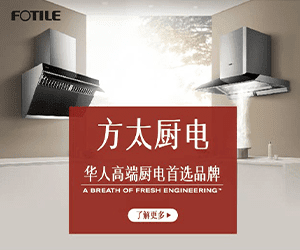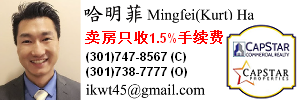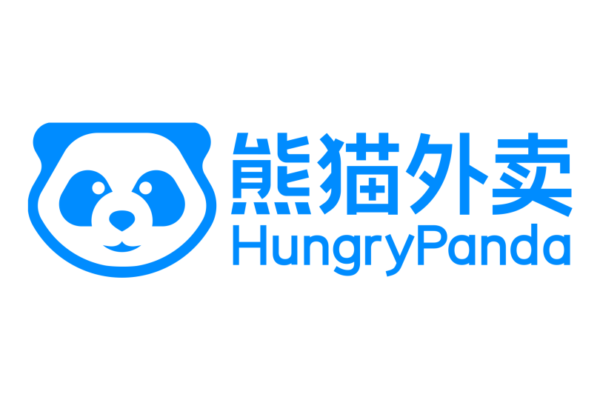过去各州而异…转基因食品新标签元旦起全美统一
世界新闻网
01/02/2022

农业部1月1日起统一全国的转基因食品新标签,过去的标签要求因各州而异,结果造成混乱,新标签的目的就是要消除这些乱象,但有食物安全维权组织表示,这个做法会给消费者造成更大负担,而且仍然存在漏洞。
以前被标记为含有「基因工程」(GE)成分或「转基因生物」(GMO)食品,现在将统一标记为「生物工程」(BE),标签上或附带有电话号码及二维码,让消费者获取更多信息。
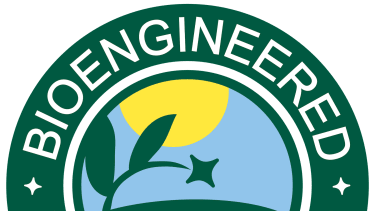
农业部发言人指出,通过统一的国家标签标准,避免了以前国家标签法规由各州拼凑而成的情况。
根据美国国家科学院(National Academy of Sciences)及联邦食品暨药物管理局(FDA)的说法,食用转基因食品不会对人类健康构成风险,然而在很大程度上,「转基因」已沦为贬义词。
非营利组织「公共利益科学中心」负责人贾菲 (Gregory Jaffe) 指出,基于这个原因,现在新法例采用「生物工程」这个用词,但大多数消费者根本不熟悉这个名词。也有其他食品安全维权组织指新规不够严格,大多数转基因食品甚至可不加上标签。
姑勿论如何,消费者有需要了解有关新食品法例下的相关信息:
首先要了解什么是生物工程食品?是指将一个新基因放入蔬果、牲畜内以改变其特性,以达到加强抵抗疾病、虫害的能力,又或提高其营养价值。 目前,市场上一些苹果、油菜、玉米、茄子、木瓜、菠萝、土豆和鲑鱼等多经基因改造。但大多数水果、蔬菜、谷物、种子和豆类都没有转基因版本。
新法例下,食品包装上有一个圆形绿色标签,上面写着「生物工程」或「源自生物工程」,标签上或会列出电话号码及二维码,让消费者可以追查。
若包装上没有二维码或「生物工程」食品标签,是否不含转基因成分?答案是不一定。因为由生物工程植物制成的淀粉、油和甜味剂,经过高度加工后没有转基因残留,这可毋须附上标签。
另外,含转基因成分不足5%的的高度加工食品,如苏打水、糖果及食用油等,不受规则所限,然而这个数值远低于欧盟的0.9%标准。这都是食安维权组织认为不妥及存在漏洞之处。
牲畜食用生物工程饲料,其产品会否视为生物工程食品?答案是不会。例如食用生物工程饲料的乳牛,所产的牛奶就不会被视为生物工程食品。
食品制造商、进口商及零售商,必须披露食品是否经过生物工程或使用生物工程成分,但餐馆及饮食服务机构不必遵守新规定。
农业部表示,当局不会到店内抽查食物。民众若发现有任何怀疑违规行为,可以向农业部官网投诉。

‘Bioengineered’ replaces ‘GMO’ on food labels
By GRAYSON QUAY
01/02/2022

Starting Saturday, food with altered DNA sold in the U.S. that was previously labeled as “GE” (genetically engineered) or “GMO” (genetically modified organisms), will now be labeled as “bioengineered,” The Washington Post reports.
This new directive from the U.S. Department of Agriculture aims to provide uniform language to replace the variety of state labeling policies. In 2016, then-President Barack Obama signed a law establishing a timeline for banning state GMO labeling laws and empowering the USDA to issue federal labeling rules, which it did in 2018.
Under these new rules, packaging will also include a phone number or QR code consumers can use to access more detailed information.
The policy does, however, include plenty of loopholes. Products derived from bioengineered ingredients do not have to be labeled if they are so extensively processed that no DNA remains. Most sodas and cooking oils would fall into this category. The USDA also allows a 5 percent threshold for “unintended” contamination by bioengineered ingredients. European Union standards only allow for unintended contamination if the amount of GMO products is .9 percent or less.
The Center for Food Safety has filed a lawsuit against the USDA challenging these new rules, especially the use of the term “bioengineered,” which the lawsuit argues will be confusing to shoppers. “These regulations are not about informing the public but rather designed to allow corporations to hide their use of genetically engineered ingredients from their customers,” Center for Food Safety Executive Director Andrew Kimbrell said in a statement.
According to the U.S. Food and Drug Administration, eating bioengineered foods poses no health risks.
美国取消福岛核事故后对日产食品的进口限制
文 / 陈慧璋
9/21/2021
(早报讯)日本周三(22日)宣布,美国在福岛核事故后对日本生产食品实施的进口限制已经解除。
共同社报道,日本农林水产部说,美国食品与药物管理局(FDA)于当地时间9月21日取消相关限制。
美国以日本的县为单位采取停止进口措施。2011年日本福岛核电站事故发生后,美国对日本进口食品实施限制。此前被限制的对象包括福岛等14个县,此次全面解除限制。涉及福岛产大米、各地的原木香菇等累计100个品种。
日本农业部长野上浩太郎周三透露,欧盟也将从10月10日起部分放宽进口限制,蘑菇将不需要提供产地证明等,但福岛产的部分水产品、野生蘑菇等将继续面对限制。
据日本农林水产部介绍,美国是日本农林水产品和食品的第三大出口目的地。2020年的对美出口额为1188亿日元(约15亿新元);其中,不含福岛产的大米约为5.6亿日元。
鉴于美国取消了进口限制,2011年核事故后55个国家与地区采用的进口限制减少至14个国家与地区。日本政府将继续向中国内地、韩国和香港等余下的国家与地区呼吁取消限制。
日本将铺设海底隧道 两年后排放福岛核污水
来自 / 联合早报 | 文 / 符祝慧
8/25/2021
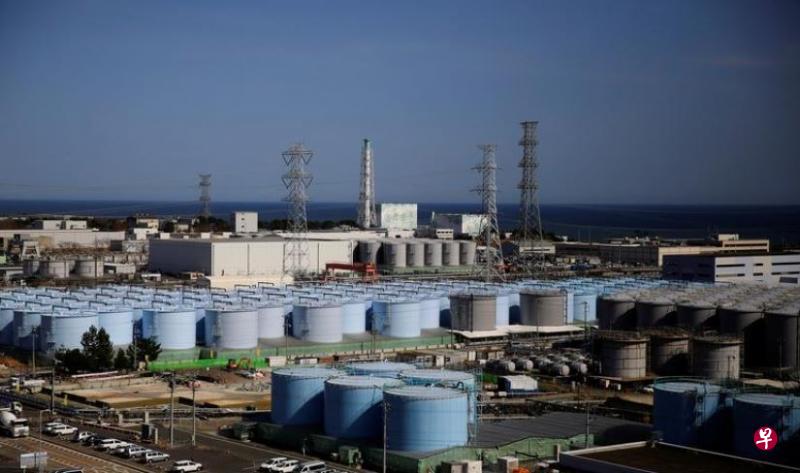
日本政府决定在福岛核电厂建造一条长一公里的海底隧道,将无法储存的大量核废水排入海洋。这个核废水排放计划再次引爆日本渔民的怒火,当局准备通过设立基金来赔偿渔民的损失。
福岛第一核电厂在2011年的三一一大地震中遭到海啸冲击,引发严重的核泄漏事故。东京电力公司10年来一直以持续注水让核反应堆冷却来维持安全。
日本媒体昨天报道,上述所产生的辐射污水至今已积存了127万吨,相当于500个奥运标准泳池的水量;估计到了2022年,岛上所有的储水箱将装满,因此必须找地方排掉污水。日本政府和东电在4月份议定两年后把辐射水倒入大海。双方犹豫的只是要直接倒入,或是建造排水管来疏导排出。
东电昨日提交的方案显示,当局的最后决定是从电力站铺造一条海底隧道,将污水排入一公里外的海中。
东电强调:“这个做法有助于避免排放时扩散,可降低对渔业的影响。”它也再次强调:“这些辐射废水都经过处理,是过滤了氚等辐射性物质后才排出的。”
东电计划下个月展开海底和地质调查,为建设海底管线铺路,目标是在2023年的3月完工。
日本渔民坚决反对将核污水倒入大海,认为即使核污水经过处理,但仍会残留辐射物质。国际舆论也强烈批评这将危害全球海洋环境。
日本政府24日已针对核污水排放的影响召开内部会议。官员透露,当局考虑与东电商讨,推出一套具体补偿方案来安抚渔民。重点是成立基金,一旦福岛县的海产销量明显下滑,政府就会动用基金做出补偿。
日本福岛核污染水将从海底隧道排至近海
文 / 陈慧璋
8/24/2021

日本放送协会(NHK)周二(8月24日)报道,日本政府和东京电力公司已决定通过海底隧道将福岛第一核电站的核污染水排放至近海。福岛县渔业协同组合联合会对此表示“坚决反对”。
新华社引述该报道说,日本政府和东电研究过两种核污染水排放方案,一是通过海底隧道排放至距离核电站1公里左右的近海,二是直接从沿岸排放。
相关人士透露,日本政府与东电已决定采用通过海底隧道排放至近海方案,理由是这种排放方式更易让核污染水在海洋扩散。
福岛县渔业协同组合联合会负责人周二表示,该联合会“坚决反对将核污染水排放到海洋的立场没有改变”。
日本全国渔业协同组合联合会会长岸宏同日发表声明说,该组织已要求日本政府对核污染水排放入海方案进行负责任的说明,但至今没有得到具体答复。
NHK指出,由于开凿海底隧道需要稳定的地下岩层,东电决定于9月开始对相关海底状况进行磁力勘探,之后实施钻探调查以确认地质结构。东电还将在9月向日本原子能规制委员会提交实施该计划的申请。
受2011年发生的大地震及海啸影响,日本福岛第一核电站1至3号机组堆芯熔毁。截至今年3月,包括为冷却这些堆芯而注入的水和周边不断汇入的地下水、雨水,该核电站内已产生125万吨核污染水,且仍在继续增加。
日本政府今年4月决定,将核污染水经过滤、稀释后排放入海,排放将于约两年后开始,预计将持续20年至30年,直至废堆工作完成。
日本福岛核污染水排海事关全球海洋生态环境安全,事关各国人民生命健康,国际社会普遍对日方此举可能带来的影响表示强烈担忧,以福岛县为首的日本各地渔业从业者也一直强烈反对。
韩国重申反对核废水排海 升级对日本水产辐射量检测标准
4/20/2021
(早报讯)韩国外交部长官郑义溶20日强调,将坚决反对日方将福岛核污水排入海洋。与此同时,韩国已升级对日本水产辐射量检测标准。
郑义溶曾于19日在国会表示,若日方按照国际原子能机构(IAEA)规定的标准进行处理,韩国就没有必要坚持反对。郑义溶当天就此解释称,部分观点认为政府对涉日问题一概持反对态度,但事实幷非如此,因此才有了上述表述,意在强调若日方的举措真能符合相关条件,韩方大可不必坚持反对。
郑义溶所提的三项条件包括,日方须向韩方提供能够确保韩国国民安全和健康的科学依据、提前同韩方开展协商、保障韩方专家参与国际原子能机构(IAEA)的验证过程。
郑义溶还表示,据外交部了解,目前只有美国对日方的排放决定持积极态度。外交部已要求美方说明其使用“处理水”而非“污染水”一词的科学依据,以及认定日方决定透明且符合全球安全标准的根据等。
郑义溶表示,日方的排放决定可能会使太平洋沿岸国家遭受灾难性后果,外交部将向这些国家积极宣传韩方立场,幷在国际舞台上将日方决定付诸公论。他还指出,韩方早在2018年日本宣布考虑将福岛核污水排海后就开始研究向国际法院起诉日本等方案。若日方不履行国际法义务,韩方可能启动法律程序。
日本福岛海域鱼类放射性物质超标 被禁止上市
文 / 陈慧璋
4/19/2021
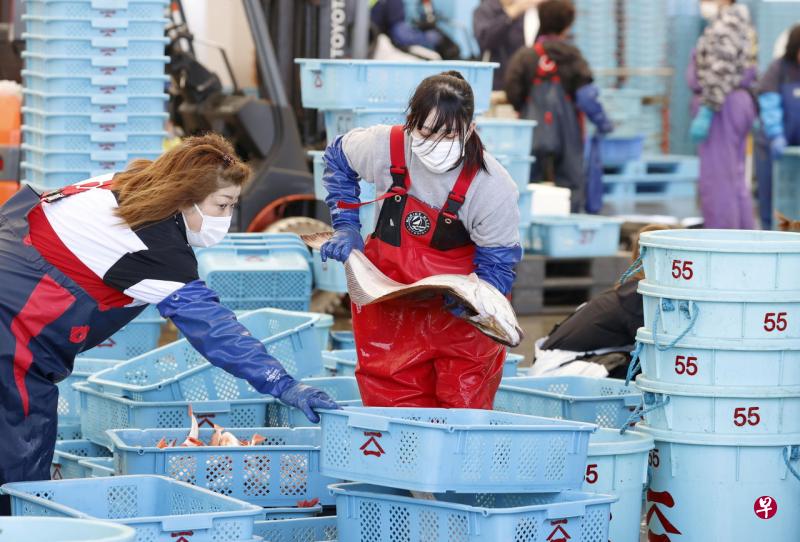
(早报讯)日本政府周一(19日)宣布,因被检测出放射性物质超标,福岛县海域的黑鲉被禁止上市。这一决定打破了自去年2月福岛县海域海产品上市限制被全面解除的情况。
新华社报道,根据福岛县消息,4月1日在福岛县海域捕捞的一条黑鲉体内被检测出270贝克勒尔放射性物质铯,超出《食品卫生法》所规定的标准值。
福岛县说,这条黑鲉是在距福岛县南相马市13公里的37米水深处捕捞的。
今年2月,福岛县渔业协同组合联合会在试验打捞作业时就发现该县黑鲉体内所含放射性物质超标,并已主动停止黑鲉上市。
东京电力公司福岛第一核电站事故发生后,最多曾有44种海产品被限制上市,但自去年2月25日起,上述海产品上市限制被全面解除。
Apr 13, 2021
Apr 13, 2021
Apr 13, 2021
福岛排核废水背后的政治角力
文 / 联合早报网
4/14/2021
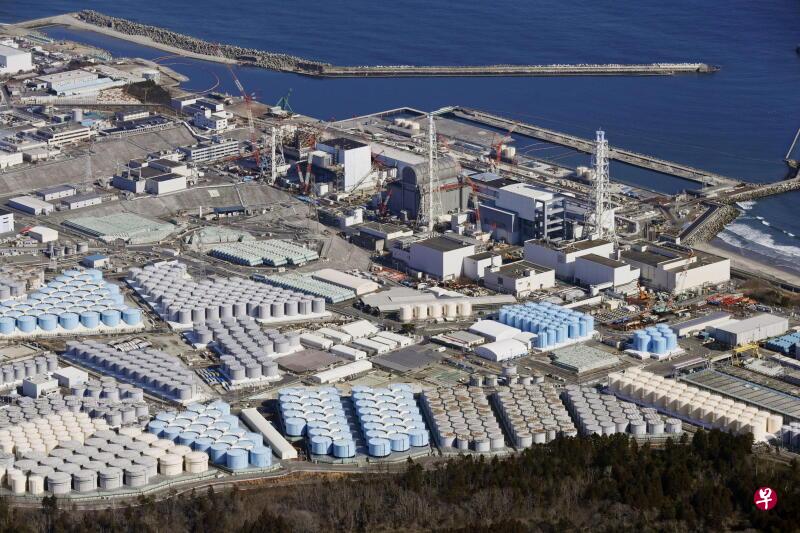
日本大地震引发的福岛第一核电站事故发生10年后,日本政府内阁昨天通过了将核电站内大量受放射性物质污染的废水排放入海的决定,此举不仅招致日本民间的强烈反弹,更引发中国、韩国、俄罗斯的不满。
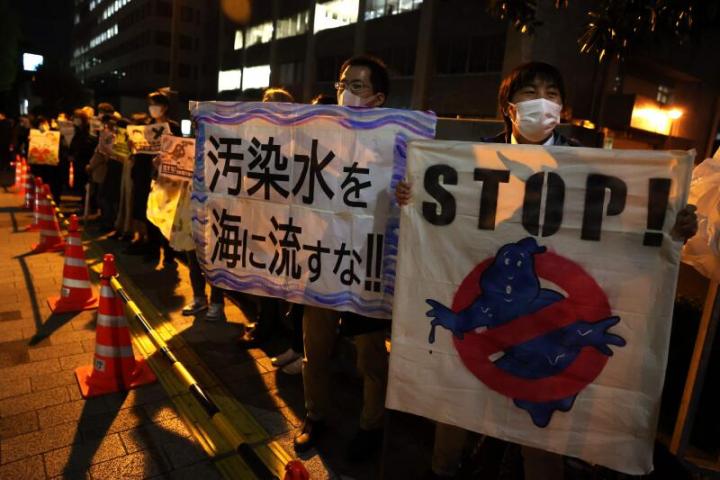
而就在日本邻国一面倒的抗议声中,太平洋彼岸的美国却对日本政府的决定表达了明确支持,认为做法符合“全球公认的核安全标准”。美国国务卿布林肯还在推特上发文感谢日本“在决定处理福岛核电站核污水方面作出公开透明化的努力”。
中国外交部发言人赵立坚今天就提到,“美国居然还对日方表示了感谢”。他说,既然美国重视环境问题,就应该切实负起责任,敦促日本以诚实、科学、负责任的态度,慎重对待福岛核电站事故核废水处置问题,而不是不分是非,不讲原则,双重标准。
由此,一个看似只是科学争议的背后,展开的却是一场波诡云谲、风起云涌的地缘角斗。
日本为何选择将福岛核废水排入大海?
日本首相菅义伟昨天说:“处理废水是废炉作业不可避免的环节。在确保安全的前提下,我们研判,将废水排入大海是最实际的做法。”
何谓“最实际的做法”?福岛核电站所属的东京电力公司解释说,虽然除了“排污入海”外,还有蒸汽释放、氢气释放、地下掩埋以及向岩石圈注射(geosphere injection)的方式,但这四种方式在法规、技术和时间方面都还有太多悬而未决的问题。更重要的是,就时间和经济成本而言,“排污入海”优势最显著。
东电提供的日本政府专家小组的评析报告中写道,“排污入海”的时间或持续91个月,在上述五种方式中最短,同时也是资金需求量最少的,仅需34亿日元(4200万新元)。对比资金投入最多的方式——“地下掩埋”所需的2431亿日元,“排污入海”的花费只是零头而已。
这大概也是中国外交部谴责日本的主要原因:“日方在未穷尽安全处置手段的情况下,不顾国内外质疑和反对,未经与周边国家和国际社会充分协商,单方面决定以排海方式处置福岛核电站事故核废水,这种做法极其不负责任,将严重损害国际公共健康安全和周边国家人民切身利益。”
“排污入海”的争议点在哪?
菅义伟还提到了“确保安全的前提”,那么又何谓“确保安全的前提”?按照日本官方说法,当局规定东电排放前须用海水将辐射水稀释100倍以上,即日本国家辐射浓度基准值的1/40,也相当于世界卫生组织所定饮用水辐射安全标准的1/7。

根据东电数据显示,经过“多核素去除设备”(ALPS)的处理,核废水当中的绝大部分放射性元素都可以清除,除了一种叫“氚”(Tritium)的放射性物质。
有科学分析指出,氚带来的是β衰变,能量虽高但穿透力弱,在空气中仅影响数厘米的范围,亦不可能穿透包括人体皮肤的任何阻碍物。事实上,大自然受宇宙射线或环境辐射影响,正常情况下也会产生微量的氚,因此氚在海水或水资源中是必然存在的。
因此在理论上,日本只要跟随国际标准,把废水排出大海是不会对环境造成太大影响。

日本的计划就得到了国际原子能机构的支持,该机构说释放的过程与世界其他工厂的废水处理类似,其总干事格罗西斯今年早些时候曾说:“向海洋排水在其他地方也有发生。这不是什么新鲜事。”
但问题在于,上述理论都是建立在日本官方的一面之词上,并没有第三方机构的检测或者国际机构进行评定。对于这一做法产生的后续影响,仍有许多不确定性。
有核专家就指出,“放射性氚是废水中唯一的放射性物质”这一说法不实。废水中还含有放射性同位素碳14,其半衰期为5370年,可以进入一切生物体内,可能会损害人类DNA。
日本作出排污决定的政治考量
福岛核电站的废水处置问题10年来一直令日本政府头疼,随着东电的贮存空间已近饱和,这也成为了“无法避开”的课题。
然而选择在这个时刻宣布此决定,除了东电的实际情况,也有日本内忧外患的政治考量。
日本东海学园大学国际问题研究学者桥本淳寺认为,日本政府核污水排放问题已经不是单纯的环境保护问题,而是上升到国际关系领域的政治问题。
桥本分析说,这背后亦可从政治利益进行计算。本周即将访问美国的菅义伟,此刻放出如此巨大的国际震撼弹,其希望捆绑跟美国交换政治利益的战略意图十分明显。
一方面,福岛核事故10年间,日本没有能力完全解决这一遗留问题;另一方面,在拜登政府希望联手盟友遏制中国的大背景下,不排除日本借此与美国讨价还价。
他还提到,中日关系近期因钓鱼岛(日本称尖阁诸岛)海域、台海、南中国海等区域紧张升温,不能排除日本借由核污水这一问题与北京进行周旋。
从国内形势看,日本筑波大学国际研究学者明石大辅认为,日本政府目前在疫情中应对十分不利,菅义伟政府希望得到日本国内大财阀的支持,在今年举行的国会选举中,让自民党继续执政,而对于东京电力的妥协就是选举策略的一种考虑。
明石认为,牺牲人口比例中较小且处于相对弱势的渔业业者,争取更多相关财阀的资金支持,以及其背后庞大数量的利益既得者的选民支持,才是这一次日本菅义伟政府“不顾反对,执意为之”的根本原因。
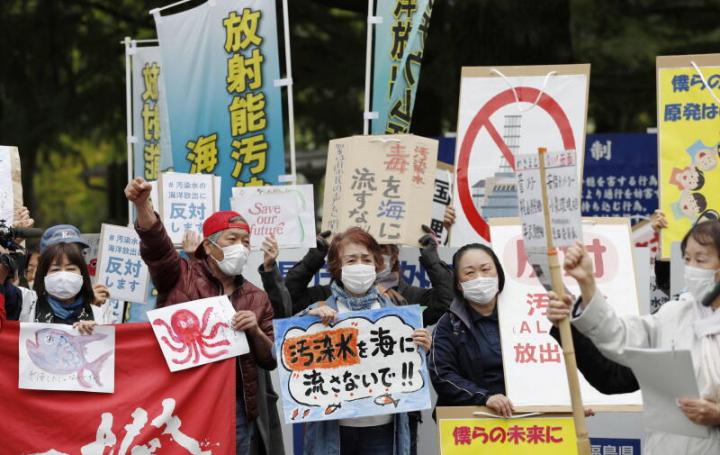
明石认为,牺牲人口比例中较小且处于相对弱势的渔业业者,争取更多相关财阀的资金支持,以及其背后庞大数量的利益既得者的选民支持,才是这一次日本菅义伟政府“不顾反对,执意为之”的根本原因。
根据日本民调机构调查显示,在日本决定排放核污水后,有日本电力、建设、钢铁、化工等资金实力雄厚行业背景的选民,对菅义伟政府的支持率出现了明显上升。
Six Spaces Home Staging

Contact: Hongliang Zhang
Tel: 571-474-8885
Email: zhl19740122@gmail.com
中美俄的政治角力场
作为日本近邻,无论是官方还是民间,中国对日本核污水排海的决定都表现出了强烈的愤慨和不满,“福岛核污水排入大海”“日本政府制作放射性氚吉祥物”等相关话题这两天也出现在微博热搜。

中国外交部自日本上周五(9日)宣布“基本决定”将福岛核污水排入大海,就已经发出了声明回应。
随着日本内阁昨天通过这一决定,尤其是美国的支持表态以及俄罗斯外交部对日本的批评,更令这一问题上升成中美俄的政治角力场。
中国外交部发言人赵立坚在今天的例行记者会上连发三问质问日本——日方真的听到了国内外的质疑和担忧吗?日方此举真的符合国际法吗?日方拟排放的核废水真的符合国际标准吗?他并强调,“美国的许可不等于国际社会的许可”。
中国社科院日本研究所副研究员庞中鹏指出,菅义伟选择在访美前夕公布排海决定,确有时机的考量。拜登上台后一直强调要重新加强与盟友关系,3月份还与日本举行了“2+2会谈”,在此背景下,美国若公开反对日本排污入海决定,也是“自己打自己的耳光”。
中国社科院美国研究所研究员刘卫东还分析,对美国来说,如果排污入海真的损害美方的核心利益,美国一定会谴责日方,如今美方表态支持,也是因为美方觉得距离遥远,日本此举对其不会造成太大影响。

事实上,美国食品药品管理局(FDA)上月更新的第99-33进口警示,仍然禁止包括海产品在内的一系列日本食品进入。FDA强调,由于与辐射和核污染有关的公共卫生问题,已加强对日本管制产品的监视。

可见,美国并非确信自己能从潜在的核污染中独善其身,但眼下的这场大国角力却不容缺席。
U.S. Food and Drug Administration
Import Alert 99-33
(Note: This import alert represents the Agency’s current guidance to FDA field personnel regarding the manufacturer(s) and/or products(s) at issue. It does not create or confer any rights for or on any person, and does not operate to bind FDA or the public).Import Alert # 99-33Published Date: 03/04/2021Type: DWPE
Import Alert Name:
Detention Without Physical Examination of Products from Japan Due to Radionuclide Contamination
Reason for Alert:
NOTE: Revisions to this Import Alert dated March 4, 2021 updates reason for alert with March 2021 edit and removes one product in the Guidance section under IWATE PREFECTURE. Changes are noted and bracketed by asterisks (***).
On March 11, 2011, an 8.9 magnitude earthquake triggering a 30 ft tsunami struck the Pacific Coast of Japan. The force of the tsunami destroyed a great deal of the infrastructure along portions of the Japanese coast. The most notable damage from the tsunami affected the Fukushima Daiichi nuclear plant. The following prefectures are in the closest proximity to the Fukushima Daiichi nuclear plant: Fukushima, Gunma Ibaraki, and Tochigi.
The Fukushima Daiichi nuclear plant houses several nuclear reactors that pose of a potential threat of radiological contamination to the surrounding areas. Due to the public health concerns that are associated with radiation and nuclear contamination, FDA has increased surveillance of regulated products from Japan.
On March 19, 2011, the Japanese Ministry of Health, Labour and Welfare confirmed the presence of radioactive iodine contamination in dairy, fresh produce, and infant formula products. Japanese data analyses revealed that the food products measured from March 16-18, 2011, indicated the presence of radioactive iodine was five times the acceptable levels. The elevated levels were identified in products tested in Kawamata Town, Fukushima prefecture and Ibaraki prefecture; areas around the Fukushima Daiichi nuclear power plant.
Though radioactive iodine has a short half-life of about 8 days and decays naturally within a matter of weeks, there is a risk to human health if radioactive iodine in food is absorbed into the human body. If ingested, it can accumulate in and cause damage to the thyroid. Children and young people are particularly at risk of thyroid damage due to the ingestion of radioactive iodine.
On March 21, 2011, the Japanese Prime Minister ordered the Governors of the affected prefectures of Fukushima, Gunma, Ibaraki, and Tochigi to stop the distribution of spinach and kakina (a local Japanese vegetable) into the market and ordered the Governor of Fukushima prefecture to stop the distribution of raw milk.
On March 23, 2011, the Japanese Prime Minister ordered the addition of flowerhead brassicas, head leafy vegetables, and non-head leafy vegetables to the group of products previously restricted from distribution into the market on March 21, 2011. The Governor of the Ibaraki prefecture was also ordered to stop the distribution of raw milk and fresh parsley. This means no such products may lawfully be placed in the domestic or export markets.
Review of additional data received after March 23, 2011, indicated vegetables from two additional prefectures contain unsafe levels of Iodine-131. These additional prefectures are Chiba and Saitama. We do not have specific geographic information for the samples found to contain unsafe levels of radionuclides beyond which prefectures they were from. However, the samples were from a variety of vegetables and were taken on different dates. In light of this, and due to the unpredictability of weather patterns and the distribution patterns of any radioactive material that may reach crops and pastures, the entire area of the two prefectures has been included in this Import Alert.
On April 12, 2011, the Japanese government lifted its restriction from distribution of spinach and kakina from the Gunma prefecture; and kakina from the Tochigi prefecture based on data received. Because this restriction of sale by the Government of Japan has been lifted, detention under section 801(a)(2) is no longer appropriate for spinach and kakina from the Gunma prefecture; and kakina from the Tochigi prefecture.
On April 13, 2011, the Government of Japan ordered the addition of mushrooms to the group of products previously restricted from distribution into the market on March 21, 2011.
On April 10, April 14, and April 17, 2011, the Japanese government lifted its restriction from distribution of milk, kakina, and spinach from the Ibaraki prefecture respectively, based on data received. Because this restriction of sale by the Government of Japan has been lifted, detention under section 801(a)(2) is no longer appropriate for milk, kakina, and spinach from the Ibaraki prefecture.
On April 20, 2011, the Government of Japan ordered the addition of sand lance from Fukushima prefecture to the group of products previously restricted from distribution into the market on March 21, 2011.
On May 9, 2011, FDA reviewed additional data received from the Government of Japan indicating radiation is no longer being detected in food products from the prefectures of Gunma, Chiba, and Saitama. Products from these prefectures are removed from Detention Without Physical Examination.
On June 2, 2011, the Japanese Prime Minister ordered the addition of tea leaves to the group of products previously restricted from distribution into the market from the Ibaraki and Tochigi prefectures.
On June 27, 2011, the Japanese Prime Minister ordered the addition of tea leaves to the group of products previously restricted from distribution into the market from the Kanagawa prefecture; and dace, ayu, and Salmon (landlocked) (yamame) from the Fukushima prefecture.
On June 30, 2011 and July 4, 2011, the Japanese Prime Minister ordered the addition of tea leaves to the group of products previously restricted from distribution into the market on from the Gunma and Chiba prefectures.
From July 19 to August 29, 2011, the Japanese Prime Minister ordered the addition of yuzu to the group of products previously restricted from distribution into the market from the Fukushima prefecture; and beef from the Fukushima, Kanagawa, Tochigi, Gunma, Chiba, Miyagi, and Iwata prefectures.
From November 7, 2011 to January 16, 2012, the Japanese Prime Minister ordered the addition of kiwi fruit, rice, and bear meat, to the group of products previously restricted from distribution into the market from the Fukushima prefecture; boar meat from the Fukushima, Ibaraki, and Tochigi prefectures; shitake mushrooms from the Chiba, Ibaraki, and Miyagi prefectures; brick-cap mushrooms and pholiota nameko from the Tochigi prefecture; and deer meat from the Tochigi prefecture.
From January 17, 2012 to May 31, 2012, the Japanese Prime Minister ordered the addition of hatakewasabi, wild Japanese butterbur scape, and common carp (not farm raised) from the Fukushima prefecture; bamboo shoots and log-grown shitake mushrooms from the Tochigi, Ibaraki, Chiba, Miyagi, and Iwate prefectures; boar meat from the Miyagi prefecture; Japanese pepper from Tochigi prefecture; Japanese parsley from the Iwata prefecture; eel, rockfish, Nibe croaker, and channel catfish (not farm raised) from the Ibaraki prefecture; panther puffer from the Miyagi prefecture; seabass and olive flounder from the Ibaraki and Miyagi prefectures; Pacific cod from the Miyagi and Iwata prefectures; dace from Gunma, Miyagi, and Iwata prefectures; wild white spotted char (not farm raised) from the Fukushima, Miyagi, and Iwata prefectures; crucian carp (not farm raised)from the Fukushima and Ibaraki prefectures; land locked salmon from the Fukushima, Gunma, and Miyagi prefectures; pteridium aquilinum (bracken fern) from the Fukushima, Tochigi, and Iwata; koshiabura (wild tree sprout) from the Fukushima, Ibaraki, Tochigi, Miyagi, and Iwata prefectures; royal fern from the Fukushima, Tochigi, Miyagi, and Iwata prefectures; and wild Arelia root from the Fukushima and Tochigi prefectures.
From June 1, 2012 to July 10, 2013, the Japanese Prime Minister ordered the addition of the following products to the group of products restricted from distribution into the market mushrooms from the Aomori prefecture; aralia sprout, azuki bean, bamboo shoots, chestnuts, ostrich fern, soybean, ume, giant butterbur, uwabamisou, Alaska Pollock, barfin flounder, black cow-tongue, black rockfish, braddblotched rockfish, brown hakeling, conger eel, fat greenling, flathead, flathead flounder, fox jacopever, goldeye rockfish, gurnard, halfbeak, black porgy, eel, seabass, littlemounth flounder, long shanny, marbled flounder, nibe croaker, northern sea urchin, ocellate spot skate, olive flounder, pacific cod, panther puffer, poacher, red tongue sole, ridged-eye flounder, rockfish (sebastes cheni), sea raven, shotted halibut, slime flounder, spotted halibut, starspotted smooth-hound, starry flounder, stone flounder, surfperch, venus clam, vermiculated puffer, cooper pheasant, green pheasant, hare, and spot-billed duck from the Fukushima prefecture; mushrooms, Salmon (landlocked)(excluding farm raised), whitespotted char(excluding farm raised), Bear meat, boar, cooper pheasant and venison from the Gunma prefecture; ocellate spot skate, pacific cod, stone flounder from the Ibaraki prefecture; buckwheat, soybean, black porgy, seabass, bear meat, venison, and cooper pheasant from the Iwate prefecture; buckwheat, ostrich ferns, rice, soybean, ayu(excluding farm raised), Salmon (landlocked) (excluding farm raised), black porgy, and bear meat from the Miyagi prefecture; mushrooms from the Nagano prefecture; bear meat from the Niigata prefecture; mushrooms from the Saitama prefecture; mushrooms from Shizuoka prefectures; chestnut, wild ostrich fern, and whitespotted char(excluding farm raised) from the Tochigi prefecture; bear meat from the Yamagata prefecture; and mushrooms from the Yamanashi prefecture.
From June 1, 2012 to July 10, 2013, the Japanese Prime Minister also ordered the removal of the following products from the group of products restricted from distribution into the market tea leaves from the Chiba, Gunma, Kanagawa, and Tochigi prefectures; and Pacific cod from the Iwate and Miyagi prefectures.
February 2015, the Government of Japan ordered the addition of the Iwate, Miyagi and Gunma Prefectures and the removal of the Ibaraki prefecture for milk, filled milk, and milk-based infant formula. Also the addition of eel from the Chiba prefecture; the correction of milk to raw milk, Braddblotched rockfish to Brass Blotched Rockfish, the removal of Cultivated wasabi, starspotted smooth-hound, Flathead Flounder, Gurnard, Halfbeak, Littlemounth Flounder, and Northern Sea Urchin, and the addition of Turnips and Scorpion Fish from the Fukushima prefecture; the removal of Tea leaves, Nibe Croaker, Olive Flounder and Pacific Cod from the Ibaraki prefecture; the removal of buckwheat from the Iwate Prefecture; the removal of buckwheat, Olive Flounder, and Panther Puff and the addition of Wild Aralia Sprouts from the Miyagi Prefecture; and the addition of Koshiabura from the Nagano prefecture.
February and March 2015, the Government of Japan ordered the removal of restricted Pacific Cod from Fukushima and Dace from Iwate from distribution into the market.
March 2015, the Government of Japan ordered the removal of restricted Silver Crucian Carp from the Ibaraki Prefecture from distribution into the market.
April 2015, the Government of Japan ordered the removal of restricted Ridged-eye Flounder and Nibe Croaker from the Fukushima Prefecture from distribution into the market.
July 2015, the Government of Japan lifted ordered the removal of restricted Whitespotted Char from the Tochigi Prefecture from distribution into the market.
August 2015, the Government of Japan lifted the ban on distribution of Sea Raven from Fukushima Prefecture and Soybean from Iwate Prefecture.
November 2015, the Government of Japan lifted the ban on distribution of Azuki Beans from Fukushima Prefecture.
January 2016, the Government of Japan lifted the ban on distribution of Panther Puffer from Fukushima Prefecture.
March 2016, the Government of Japan lifted the ban on distribution of Seabass from Ibaraki Prefecture and soybeans form Miyagi Prefecture.
April 2016, the Government of Japan lifted the ban on distribution of soybean from Fukushima Prefecture and rice from Miyagi Prefecture.
June 2016, the Government of Japan lifted the ban on distribution of Olive Flounder and Conger Eel from Fukushima Prefecture.
July 2016, the Government of Japan lifted the ban on distribution of Barfin Flounder, Flathead, Long Shanny, Poacher and Spotted Halibut from Fukushima Prefecture.
August 2016, the Government of Japan lifted the ban on distribution of Brown Hakeling, Fat Greenling, Marbled Flounder, Ocellate Spot Skate, and Red Tongue Sole from Fukushima Prefecture.
September 2016, the Government of Japan lifted the ban on distribution of Bamboo Shoots from Chiba Prefecture.
November 2016, the Government of Japan lifted the ban on distribution of Slime Flounder from Fukushima Prefecture.
From March to September 2017, the Government of Japan lifted the ban on distribution of Alaska Pollock, Goldeye rockfish, Sand lance, Shotted Halibut, Vermiculated Puffer from Fukushima Prefecture; Rockfish, Ocellate Spot Skate, Stone Flounder from Ibaraki Prefecture; Seabass from Iwate Prefecture; Seabass from Miyagi Prefecture; and the addition of Koshiabura from the Niigata prefecture.
January 2018, the Government of Japan lifted the ban on distribution of Black Cow Tongue, Black Rockfish, and Stone Flounder from Fukushima Prefecture.
March 2018, the Government of Japan ordered the removal of restricted venison from the Miyagi Prefecture and Nagano Prefecture from distribution into the market and the Government of Japan lifted the ban on distribution of chestnuts from Tochigi Prefecture.
May 2018, the Government of Japan lifted the ban on distribution of Fox Jacopever, Rockfish (Sebastes cheni) and Seabass from Fukushima Prefecture.
November 2018, the Government of Japan lifted the ban on distribution Ostrich fern from Miyagi Prefecture.
March 2019, the Government of Japan added Ocellate Spot Skate to Fukushima Prefecture.
April 2019, the Government of Japan removed Japanese Black Porgy, Surfperch, and Starry flounder from Fukushima Prefecture; Beef from Iwate Prefecture; Beef and Japanese Black Porgy from Miyagi Prefecture; and Beef from Tochigi Prefecture.
September 2019, the Government of Japan removed Ayu, Brass blotched rockfish, and Scorpion from Fukushima Prefecture.
October 2019, the Government of Japan removed Ayu from Miyagi Prefecture.
December 2019, the Government of Japan removed Black Porgy from Iwate Prefecture, Venus Clams from Fukushima Prefecture, and added Wild Mushrooms from Ibaraki Prefecture.
May 2020, the Government of Japan removed Wild Japanese parsley from Iwate Prefecture.

October 2020, the Government of Japan updated the following product names: FUKUSHIMA PREFECTURE: change Mushroom to Wild Mushrooms; for IWATE PREFECTURE: change Log-grown Shitake mushrooms to Log-grown Shitake mushrooms (outdoor cultivation); for CHIBA PREFECTURE: change Shiitake mushrooms to Log-grown Shitake mushrooms.
December 2020, the Government of Japan added “Wild” before Uwabamisou for Fukushima Prefecture, added “Wild” before Pteridium aquilinum (bracken fern) in from Iwate Prefecture, and removed ‘Ocellate Spot Skate’ from Fukushima Prefecture.
***March 2021, the Government of Japan removed Chars (Iwana) from Iwate Prefecture. ***
FDA recognizes that the government of Japan is taking steps to address this issue and FDA will continue to provide support to their efforts.
Guidance:
Divisions may detain, without physical examination, the specified products from firms in the Fukushima, Aomori, Chiba, Gumna, Ibaraki, Iwate, Miyagi, Nagano, Niigata, Saitama Shizuoka, Tochigi, Yamagata and Yamanashi prefectures.
FDA and the Japanese government will continue to collaborate to ensure products from the affected prefectures do not pose a health risk to U.S. consumers. FDA will continue monitoring the public health risks due to radionuclide contamination, and when appropriate will deactivate the Import Alert and resume routine coverage of entries.
Products from the indicated prefectures:
AOMORI PREFECTURE:
Wild Mushrooms
CHIBA PREFECTURE:
Shitake mushrooms (Log-grown);
Common Carp;
Silver Crucian Carp;
Eel;
Boar
FUKUSHIMA PREFECTURE:
Raw Milk;
Wild Aralia Sprout;
Bamboo Shoot;
Non-head type leafy vegetables (i.e. Japanese Mustard Spinach (Komatsuna), Garland Chrysanthemum, Qing-geng-cai, Potherb Mustard (Mizuna), Leaf Lettuce (red), Spinach and other non-heading leafy vegetables);
Head type leafy vegetables (i.e. Cabbage, Chinese Cabbage and Lettuce);
Flower head brassicas Vegetables (i.e. Broccoli and Cauliflower);
Chestnuts;
Wild Japanese Butterbur Scrape;
Japanese Royal Fern;
Kiwi Fruit;
Koshiabura (wild tree sprout);
Log-grown Shitake mushrooms;
Log-grown Pholiota Nameko (outdoor cultivation)
Wild Mushroom;
Ostrich Fern;
Pteridium Aquilinum (bracken fern);
Rice;
Turnips;
Ume;
Giant Butterbur;
Wild Uwabamisou;
Yuzu Fruit
Salmon (landlocked) (excluding farm raised);
Common Carp (excluding farm raised);
Dace;
Eel; Whitespotted Char (excluding farm raised);
Bear meat;
Beef;
Boar;
Cooper Pheasant;
Green Pheasant;
Hare Meat;
Spot-Billed Duck
GUMNA PREFECTURE:
Wild Mushrooms;
Salmon (landlocked) (excluding farm raised);
Whitespotted Char (excluding farm raised);
Bear meat;
Boar;
Copper Pheasant;
Venison
IBARAKI PREFECTURE:
Wild mushrooms;
Log-grown Shitake mushrooms;
Bamboo shoots;
Koshiabura (wild tree sprout);
Eel;
Channel Catfish (excluding farm raised);
Boar
IWATE PREFECTURE:
Bamboo shoots;
Log-grown Brick-cap mushrooms (outdoor cultivation);
Log-grown Shitake mushrooms (outdoor cultivation);
Log-grown Pholiota Nameko (outdoor cultivation);
Wild Mushrooms;
Royal fern;
Koshiabura (wild tree sprout);
Wild Pteridium aquilinum (bracken fern);
*** ***
Bear meat;
Venison;
Cooper Pheasant
MIYAGI PREFECTURE:
Royal Fern;
Bamboo Shoots;
Koshiabura (wild tree sprout);
Wild Aralia Sprout;
Log-grown Shitake mushrooms (outdoor cultivation);
Wild Mushrooms;
Salmon (landlocked) (excluding farm raised);
Dace;
Whitespotted Char (excluding farm raised);
Bear Meat;
Boar meat;
Venison;
NAGANO PREFECTURE:
Wild Mushrooms;
Koshiabura;
Venison;
NIIGATA PREFECTURE:
Koshiabura;
Bear Meat
SAITAMA PREFECTURE:
Wild Mushrooms
SHIZUOKA PREFECTURE:
Wild Mushrooms
TOCHIGI PREFECTURE:
Wild Aralia Sprouts;
Bamboo Shoots;
Wild Japanese Peppers;
Wild Royal Fern;
Koshiabura (wild tree sprout);
Wild Pteridium aquilinum (bracken fern);
Wild Ostrich Ferns;
Log-grown Brick-cap mushrooms (outdoor cultivation);
Log-grown Shitake mushrooms;
Log-grown Pholiota Nameko (outdoor cultivation);
Wild Mushrooms;
Boar meat;
Venison
YAMAGATA PREFECTURE:
Bear Meat
YAMANASHI PREFECTURE:
Wild Mushrooms
Questions or issues involving import operations should be addressed to ORA/DIO (301) 796-0356 or FDAImportsInquiry@fda.hhs.gov.
Questions or issues involving OASIS or PREDICT screening should be addressed to ORA/DSS/Import Systems Branch at oraoismdssimpcomplsysbr@fda.hhs.gov.
For questions or issues concerning science, science policy, sample collection, analysis, preparation, or analytical methodology, contact the Office of Regulatory Science at 301-796-6600 or oraorsprivatelabimportalerts@fda.hhs.gov.
Product Description:
Product
Description: All specified products from the affected noted
prefectures in Japan (see ‘Guidance’ section for listings).
Product Code: 02A[][]05 Rice, Cultivated, Whole Grain
09[][][][] Milk/Butter/Dried Milk Products
16A [][][] Fish, N.E.C.
16M[][]11 Sea Urchin/ Uni
17[][][][] Meat, Meat Products, and Poultry
(beef, boar, bear, deer, duck, hare and pheasant products only)
20H[][]01, 20J[][]01, 20K[][]01, 20L[][]M, 20M[][]01 Yuzu Fruit
21R[][]11, 21S[][]11, 21T[][]11, 21U[][]11, 21V[][]11,
21X[][]11 Kiwi Fruit
24[][][][] Vegetables/Vegetable Prod
25[][][][] Vegetables/Vegetable Prod
Problem: Radionuclide Contamination
Charge:
The article is subject to refusal of admission pursuant to Section 801(a)(2) in that it appears to be forbidden or restricted in sale in the country in which it was produced or from which it was exported.[Section 801(a)(2)]
OASIS Charge Code: FORBIDDEN
Countries
JAPAN
-
(09 – – – –) Milk/Butter/Dried Milk ProdDesc: Milk /Butter/Dried Milk Products
-
(24 – – – –) Vegetables/Vegetable ProductsDesc: Vegetables/Vegetable Prod
-
(25 – – – –) Vegetables/Vegetable ProductsDesc: Vegetables/Vegetable Prod
-
(02 A – – 05) Rice, Cultivated, Whole Grain
-
(16 A – – –) Fish
-
(17 – – – –) Meat, Meat Products and PoultryDesc: beef; boar; bear; deer; duck; hare and pheasant products only
-
(16 M – – 11) Sea Urchin, Other Aquatic SpeciesDesc: Sea Urchin/Uni
-
(20 H – – 01) Citron, Dried or PasteDesc: Yuzu Fruit
-
(20 J – – 01) Citron, Jam, Jelly, Preserves, Marmalade, Butter and CandiedDesc: Yuzu Fruit
-
(20 K – – 01) Citron, Citrus Fruit Juices or ConcentratesDesc: Yuzu Fruit
-
(20 L – – 01) Citron, Topping or SyrupDesc: Yuzu Fruit
-
(20 M – – 01) Citron (Citrus Fruit Purees)Desc: Yuzu Fruit
-
(21 R – – 11) Kiwi Fruit (Subtropical and Tropical Fruit Purees)Desc: Kiwi Fruit
-
(21 S – – 11) Kiwi Fruit (Subtropical and Tropical Fruit)Desc: Kiwi Fruit
-
(21 T – – 11) Kiwi Fruit, Dried or PasteDesc: Kiwi Fruit
-
(21 U – – 11) Kiwi Fruit, Jam, Jelly, Preserves, Marmalade, Butter or CandiedDesc: Kiwi Fruit
-
(21 V – – 11) Kiwi Fruit, Juice, Milk, Creme, Drink or Nectar, Sub/Tropical FruitDesc: Kiwi Fruit
-
(21 X – – 11) Kiwi Fruit (Subtropical/Tropical Fruit Pulp)Desc: Kiwi Fruit
Source: https://www.accessdata.fda.gov/cms_ia/importalert_621.html

北美法律公益讲座安排
时间:周二到周五 晚间
5:30-7:00(西部时间)8:30-9:30(东部时间)
周二: 如何准备遗嘱文件(遗嘱workshop)
周三: 数据泄露和个人身份保护&事业机会说明会
周四: 移民和留学生常见法律问题
周五: 小企业常见法律问题&事业机会说明会
Zoom:6045004698,密码:请私信或群里@我


